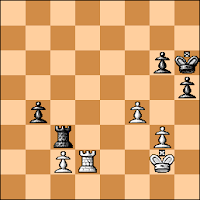The writers referenced Wikipedia's article on the BSG, and one opined
Another suggestion not mentioned in the article is that after 1.P-K4,P-K4 2.N-KB3,N-QB3 3.B-B4,N-Q5?...I should have thought the most enterprising way of punishing black's loss of tempo is with 4.BxPcheck!! (eg. ....KXB .NxPcheck etc. with ample compensation for the piece and a probably winning attack. —This was met at first with skepticism
Disagree. After 5. ... Ke7 white has no way to continue the attack or even getting more piece in to contine. Moving the Queen out 6. Qg4 d6 7. Qg5+ Nf6 =+ or 6. Qh5 can be met with Nf6 =+. Black is better and white's 4. Bxf7 is an unsound sacrifice.However, after the correction
Mi scusi, per favore. But what about the reply 5. Nxe5 to 4. Bxf7+?! Ke7!?The skeptic relented
Much to my surprise I agree. After 4. Bxf7+ Ke7 5. Nxe5 White is better, White could of even retreated the bishop by playing 5. Bc4, so 4...Ke7 is not enough.There is much to comment upon, here...
In "Talk" I had written
I like the thoughts contained in the first paragraph, especially "ample compensation for the piece," although "and a probably winning attack" may be over-stating it a bit.I still agree – if "ample compensation" means "an even game", which is what White gets against best play by Black.
But what about that line 1.e4 e5 2.Nf3 Nc6 3.Bc4 Nd4 4.Bxf7+ Ke7 ? Is there more to it than a "Jedi Mind Trick"?
I checked The Database and ran an Opening Report. There are 299 games with that line, and "Black scores badly (31%)." No surprise, there.
What of 5.Nxe5 ? Well, in 125 games "White scores above average (60%)" That sounds okay, right?
But, wait a minute.
With 5.Nxd4 (56 games) White "scores well (72%)".
For that matter, with 5.Bxg8 (60 games) White "scores excellently (78%)" and also with 5.Bc4 (20 games) White "scores excellently (80%)". Likewise with 5.c3 (5 games) White "scores excellently (80%)".
Further, with 5.Bb3 (5 games) White "scores excellently (100%)".
It is important not to get too carried away by the Opening Report, which also says that with 5.0-0 and 5.d3 (5 games each) which allow 5...Kxf7, White still "scores excellently (100%)" — both moves are clearly inferior choices (they lose a piece). For that matter, in The Database the strong 5.Bd5 (6 games) only "scores below average (50%)" for White.
So, play 5.Nxe5 for variety, but retreat (or exchange) the Bishop for the best play.
















































